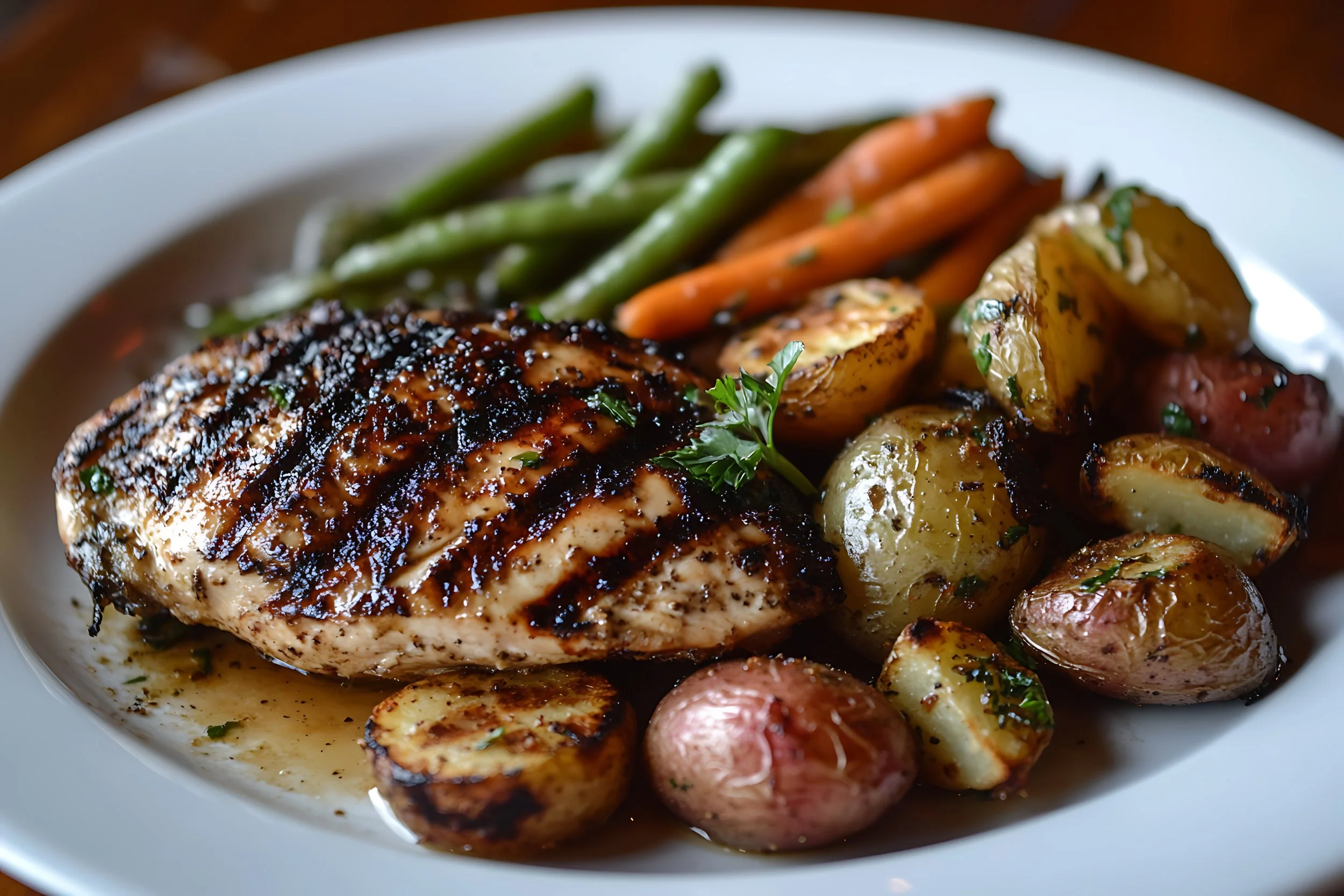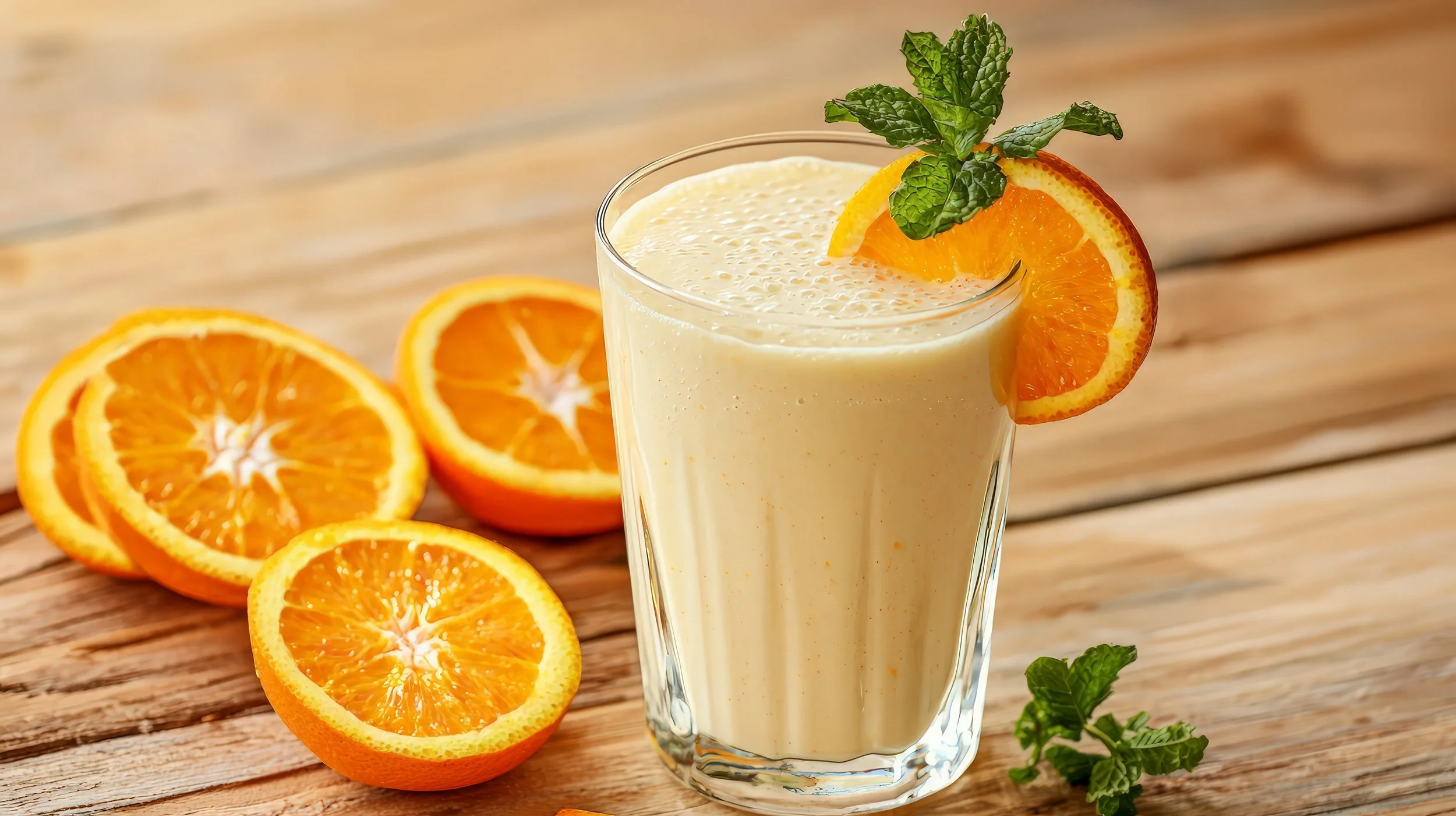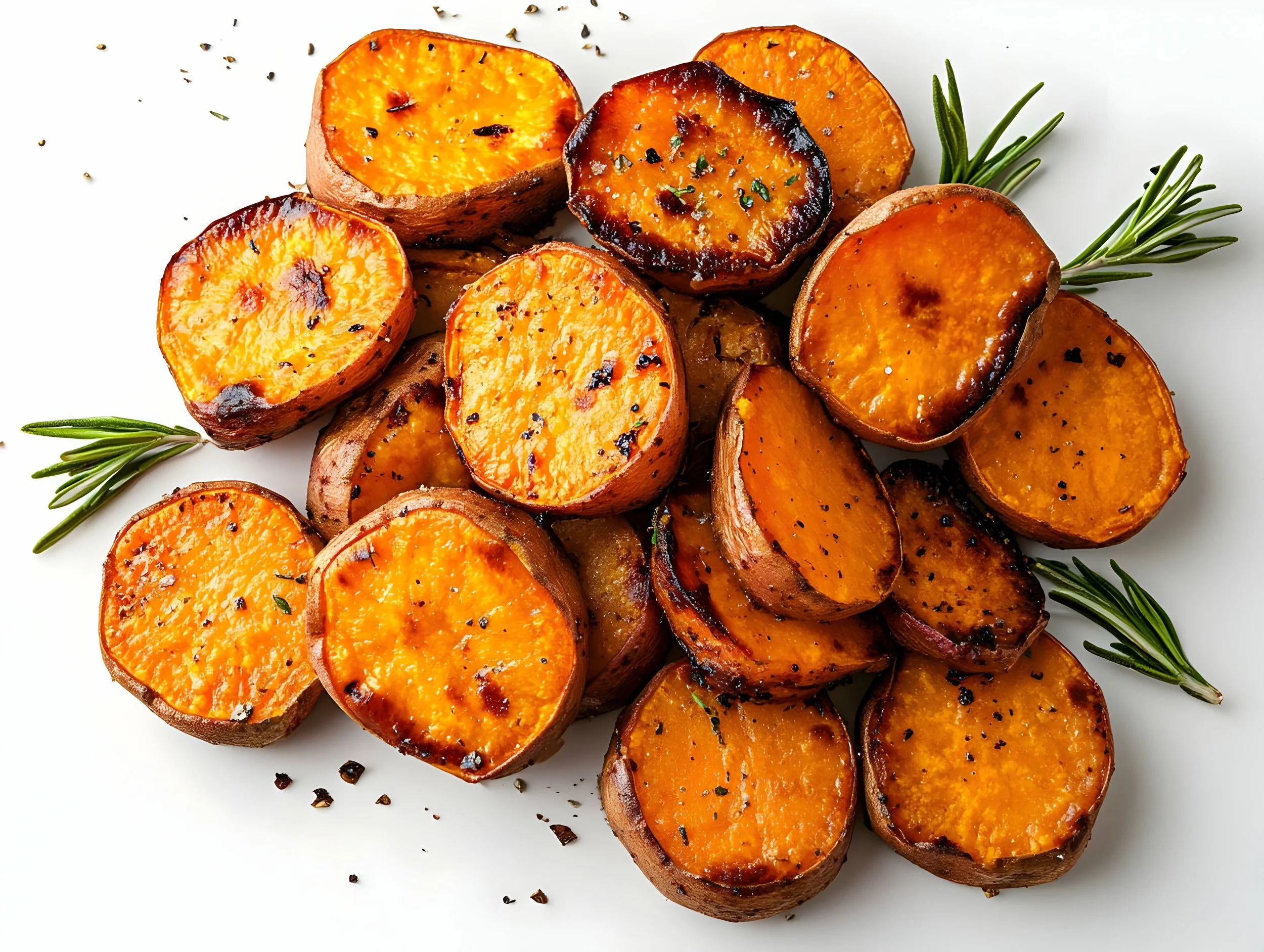🥞 Masa Pancakes
These are the ultimate metabolism-supporting pancakes—warm, fluffy, gut-friendly, and completely free of added fats. Perfect for anyone healing their liver, recovering from keto, or just looking for a high-carb, low-fat breakfast that doesn’t feel like diet food. Made with masa harina and sweetened with maple, they deliver the flavor and texture you want, without any butter or oil in the batter.
🌽. Masa harina is a traditional flour made from corn that has been nixtamalized—soaked and cooked in lime (calcium hydroxide)—which enhances its nutrient bioavailability, increases calcium content, reduces phytic acid, and makes it easier to digest, making it a gut-friendly, mineral-rich, and ancestral source of resistant starch and glucose.
🍽 Yields:
~14 pancakes (4-inch)
🌟 Ingredients
2½ cups low-fat buttermilk
(or 2¼ cups low-fat milk + 2 Tbsp lemon juice or ACV)1½ cups heirloom masa harina (nixtamalized, e.g., Masienda or King Arthur)
2 tsp aluminum-free baking powder
½ tsp kosher salt
1½ tsp ground Ceylon cinnamon
2 tsp vanilla extract
2 large eggs (or 4 egg whites for even lower fat)
¼ cup pure maple syrup
🔧 Directions
Make buttermilk (if needed):
Stir lemon juice into milk and let sit for 5–10 minutes.Mix dry ingredients:
In a bowl, whisk masa harina, baking powder, salt, and cinnamon until lump-free.Whisk wet ingredients:
In a large bowl, whisk eggs (or whites), maple syrup, vanilla, and buttermilk until smooth.Combine:
Stir the dry mix into the wet until just combined. Don’t overmix—batter will be thick but scoopable.Cook:
Heat a nonstick or ceramic skillet over medium. Lightly grease with a small amount of butter or oil (just enough to prevent sticking—this adds only trace fat). Scoop ¼ cup batter per pancake and spread into ~4-inch rounds. Cook ~2 minutes per side, until golden and cooked through.Serve with:
Warm maple syrup, stewed fruit, nonfat Greek yogurt, or a splash of OJ for the full pro-metabolic vibe.
🧮 Macros per Pancake (1 of 14):
(with 2 eggs, no added fat in batter)
Calories: ~78 kcal
Carbs: ~13g
Protein: ~2.5g
Fat: ~1g
If you use egg whites instead:
Fat drops to: ~0.3g per pancake
Calories drop slightly: ~73 kcal
✅ Notes & Tips
Still Fluffy: Even without fat, the pancakes stay tender thanks to the buttermilk and maple.
Pan Tips: A well-seasoned cast iron or ceramic nonstick pan is essential here.
Batch Prep: These freeze and reheat well, so make a double batch and pop them in the toaster all week.
These cinnamon-vanilla masa pancakes are gluten-free, low-fat, easy to digest, and sweetened naturally with maple. With no added fat in the batter, they’re the perfect high-carb breakfast for metabolic repair and hormone support — kid-approved and nutritionist-designed.
The Pro-Metabolic Approach to Mast Cell Activation and Chronic Fatigue Syndrome
What to Eat (and Avoid) When Your Nervous System and Immune System Are Both on Fire
Mast Cell Activation Syndrome (MCAS) and Chronic Fatigue Syndrome (CFS/ME) often go hand-in-hand: one is a hypersensitive immune response, the other is a crash in energy production. The overlap is staggering: histamine intolerance, post-exertional crashes, food sensitivities, insomnia, gut issues, and chronic inflammation.
And yet, in today's mainstream health culture, you're often told that nutrition doesn't matter. That what you eat has no real impact on these conditions, that nutrients can't touch what's "broken," and that the only path forward is pharmaceuticals and symptom suppression. You're expected to manage, not recover. To cope, not heal.
But this simply isn’t true.
Much of the insight in this approach is inspired by the excellent breakdown in this article on healing histamine intolerance and MCAS, which explains how nutrient deficiencies, chronic stress, environmental toxins, and microbial imbalances contribute to overactive mast cells and energy collapse.
There is a massive body of evidence — and growing clinical experience — showing that chronic illness is not a random stroke of bad luck. It’s often the result of a body that’s been undernourished, overburdened, and inflamed for years. A nervous system locked in fight-or-flight. A liver overwhelmed by environmental toxins, synthetic hormones, and mold. Gut bacteria producing excess histamine. And mast cells acting like your immune system’s faulty fire alarm — going off at every little thing, leaving you exhausted, itchy, swollen, and reactive.
The right foods can stabilize mast cells. The right nutrients can repair mitochondria. And when you stop flooding your body with inflammatory, hard-to-digest, immune-triggering ingredients, everything starts to shift.
That’s where the pro-metabolic approach shines.
Instead of bouncing between low-histamine elimination diets, vegan detoxes, or keto flares, this strategy focuses on giving your cells fuel and safety at the same time.
🔥 Foods to Avoid with MCAS & CFS
These foods are commonly high in histamine, gut-irritating, or hard on the liver, immune system, and mitochondria. They are also not part of a truly pro-metabolic framework.
Fermented & Aged Foods
Sauerkraut, kimchi
Vinegar, kombucha
Soy sauce, miso
Aged cheese
Cured meats (salami, prosciutto, bacon)
PUFA-Heavy & Inflammatory Fats
Vegetable oils (canola, soybean, sunflower, safflower)
Peanut butter, nut butters
Seeds (chia, flax, hemp)
Walnuts, almonds, cashews
Vegan "Health" Traps
Lentils, black beans, chickpeas (especially canned)
Tofu, tempeh, fake meats
Nutritional yeast
High Histamine or Histamine-Releasing Produce
Avocado, spinach, tomatoes, eggplant
Citrus, bananas, strawberries
Dried fruit (unless verified very fresh)
Other Common Triggers
Leftovers (histamine increases over time)
Bone broth (high glutamate)
Chocolate, caffeine
Alcohol
✨ Foods to Eat for Calm, Energy, and Recovery
These foods are low in histamine, nourishing to the nervous system, and aligned with a pro-metabolic philosophy. They support gut integrity, blood sugar balance, and mitochondrial repair.
Pro-Metabolic Proteins (Low Histamine)
Fresh white fish (cod, sole, haddock)
Pasture-raised egg yolks
Freshly cooked ground lamb or beef (lean, no leftovers)
Goat milk yogurt (plain, fresh)
Collagen or gelatin powder (no additives)
Easy Carbohydrates for Mitochondrial Fuel
White rice (cooked fresh)
Mashed peeled white or sweet potatoes
Well-cooked carrots, zucchini, yellow squash
Ripe peeled apples, pears, mango, papaya
Fresh blueberries or cooked peach
Nourishing Fats (Histamine-Safe)
Virgin coconut oil
Cold-pressed olive oil
Occasional ghee (test tolerance)
Extras That Help Heal
Raw carrot salad (binds histamine, estrogen, and endotoxin)
Chamomile, marshmallow root, or ginger tea
Aloe vera juice (inner filet)
Why It Works
Pro-metabolic foods aren’t just about metabolism. They’re about cellular safety. They keep blood sugar stable, reduce stress hormones, lower histamine production, and support the liver in clearing out estrogen and toxins.
This approach gives your body what it needs to repair: glucose, minerals, amino acids, and gentle support for the gut-liver-brain axis.
If you're tired of getting worse from "healthy" foods and you're ready to heal your nervous system and immune system together, pro-metabolic eating is the strategy you've been looking for.
Need help building your low-histamine, pro-metabolic plan? We build personalized protocols that help you stabilize symptoms without starving your cells. Reach out for 1:1 support or browse our course library to learn how to eat for cellular healing.
How to Eat Pro-Metabolic (Even If You’re Totally New)
If you’ve been trapped in diet culture—counting almonds, fearing fruit, or surviving on coffee and cortisol—you’re not alone. Most of us have spent years chasing thinness while unknowingly wrecking our metabolism in the process.
Enter the pro-metabolic approach: a way of eating that nourishes your body instead of fighting it. It’s not a trendy detox or a quick-fix gimmick—it’s a return to biological sanity. Pro-metabolic eating is about restoring cellular energy, supporting your thyroid and hormones, and teaching your body how to feel safe again.
If you’re brand new to this world, here’s your clear, science-rooted roadmap to getting started.
What Does "Pro-Metabolic" Even Mean?
At its core, pro-metabolic means supporting the body's natural ability to make energy—primarily through the thyroid and mitochondria.
When your metabolism is working well:
You feel warm and energized
Your digestion hums
Your sleep improves
Your cycle is regular and painless
Your mood is stable
You burn food efficiently—without stress
Most mainstream diets (keto, fasting, veganism, calorie restriction) achieve quick results by slowing your metabolism down—forcing the body into stress mode. Pro-metabolic flips the script. It feeds the body what it needs to thrive.
Principle #1: You Need to Eat More—Not Less
Most people have no idea how underfed they are. If you’re eating 1500–2000 calories a day and wondering why you’re cold, tired, bloated, and gaining weight—that’s your metabolism screaming. Your body downshifts to survive.
A healthy adult woman generally needs:
2,000–2,500+ calories/day
A healthy adult man generally needs:
3,500–4,500+ calories/day
You may need even more if you’re healing, exercising, or coming off years of restriction. When you give your body enough energy, it stops hoarding fat and starts functioning.
Our hunter-gatherer ancestors—and even our grandparents—ate far more food than most people do today. We didn’t start gaining weight from eating too much—we started gaining when seed oils wrecked our mitochondria and we responded by slashing calories. All that did was slow us down. Just one degree drop in body temperature lowers caloric needs by nearly 1,000 calories/day, and hardly anyone is sitting at 98.6 degrees anymore.
Principle #2: Carbs Are Not the Enemy—They're the Fuel
Your cells run on glucose. Your liver converts T4 to T3 (active thyroid hormone) using glucose and fructose. Your brain, heart, and reproductive system all rely on it.
Carbs don’t make you fat—PUFAs and stress hormones do.
Choose easy-to-digest, nourishing carbs, like:
Fresh-squeezed or not-from-concentrate orange juice
Raw honey, maple syrup
Ripe fruit (banana, mango, melon, apple, berries)
Sweet potatoes, white potatoes, carrots
White rice, masa harina (corn flour), sourdough (if tolerated)
Dried fruit like pineapple, dates, or mango
Avoid excessive:
Hard-to-digest starches (beans, whole grains, bran)
Artificial sweeteners
Low-carb/fiber-heavy substitutes that tax digestion
Principle #3: Protein Matters—but Type Is Key
Protein is essential for hormone production, liver detox, skin repair, and blood sugar stability—but not all protein is created equal.
Pro-metabolic proteins are:
Bioavailable (easy to digest and assimilate)
Low in inflammatory amino acids like tryptophan and cysteine
Top picks:
Dairy (milk, Greek yogurt, cottage cheese, cheese)
Collagen (bone broth, gelatin, collagen powder)
Eggs
Shellfish (especially shrimp, oysters)
Lean red meat (beef, lamb)
Skinless poultry (chicken, turkey)
A solid target is 1g/pound per day, depending on body size and goals. Another good goal is up to 1/4 of your protein from collagen and gelatin, and the rest from low-fat dairy and lean meat, to balance your calcium/phosphorus ratio. Calcium builds and maintains bones while phosphorus supports energy and cell function, and getting protein from half dairy (high in calcium) and half meat (high in phosphorus) helps balance these minerals to protect bone and metabolic health.
Principle #4: Ditch the Seed Oils—But Don’t Go Keto
Your body needs some fat—but too much, or the wrong kind, shuts down thyroid and mitochondrial function.
The worst offenders are PUFAs (polyunsaturated fats), found in:
Vegetable oils (canola, soybean, sunflower, corn)
Nuts and seeds
Nut butters and vegan spreads
Pork and poultry fat (especially with skin) - because these animals are monogastric (one stomach) and store the oils they are fed. Even organic and pastured-raised pork and chicken are usually still fed seed oils.
These fats oxidize easily, promote inflammation, and damage cellular metabolism. They also accumulate in your fat tissue and take years to detox.
Stick with saturated fats in moderation:
Butter or ghee
Coconut oil
Tallow
Dairy fat (in full-fat milk or cheese)
For most, 15–20% of calories from fat is ideal while healing the metabolism. Going higher slows things down. That’s because high fat + high carb creates a metabolic “swampland” where fuel can’t flow efficiently—your body gets stuck storing instead of burning.
Keeping fat low lets carbs do their job: refill glycogen, increase thyroid output, and drive real energy. The challenging part is keeping fat low—but the good news is you get to eat more food, enjoy plenty of carbs, watch symptoms disappear, and eventually maintain a leaner body on higher calories.
Principle #5: Eat Every 3–4 Hours
If you’re skipping breakfast or intermittent fasting, your body is likely surviving on adrenaline and cortisol—not a good long-term plan.
When blood sugar drops too low, your body raises stress hormones to compensate. This wrecks thyroid conversion, breaks down muscle, and causes energy crashes, irritability, and poor sleep.
A good rhythm is:
3 solid meals + 1–2 snacks per day
Front-load your calories earlier in the day
Always pair protein + carb (never carbs alone)
Principle #6: Salt + Sugar + Saturated Fat = Yes
You heard that right. Your body needs salt to make stomach acid, adrenal hormones, and digestive enzymes. And sugar (from fruit, juice, honey) feeds your cells, not your waistline—when paired properly.
Skip the low-sodium fear-mongering. Salt your food to taste. Balance blood sugar by eating sugar with protein, not alone.
Principle #7: Heal Digestion, Don’t Fight It
If you get bloated or constipated eating this way, it’s not the diet—it’s your damaged digestion from years of stress and restriction. That can be fixed.
Start slow. Build resilience.
Helpful supports:
Raw carrot salad daily (antibacterial, anti-estrogen)
Apple cider vinegar before meals
Bone broth, gelatin, or collagen for gut lining
Prokinetics if you’re sluggish (ginger, artichoke, vitamin B6)
Ox bile or betaine HCl for belching or fat intolerance
What a Pro-Metabolic Day Might Look Like
☀️ Breakfast: orange juice with collagen, eggs, sourdough toast with a little butter and lots of jam, and nonfat Greek yogurt smoothered in honey.
🍓 Snack: lowfat cottage cheese with a bowl of pineapple, gelatin gummies, and a skim milk cappuccino with maple syrup.
🥩 Lunch: grilled chicken breast, white rice, cooked carrots with butter.
🥕 Snack: raw carrot salad with ACV and salt, a glass of fresh lemonade with a side of honey-sweetened Greek yogurt, and a handful of fresh berries or melon.
🍠 Dinner: lean ground beef and shrimp, mashed sweet potato, sautéed squash with butter, and bone broth with sea salt.
🍬 Dessert: 1 cup skim milk hot cocoa with 1 scoop collagen, 1 tbsp honey-sweetened gelatin, and gummy bears.
How Do You Know It's Working?
Watch for these metabolic green flags:
Warmer hands and feet
Better energy without stimulants
Stronger libido
Regular, painless periods
Less bloating or constipation
Improved sleep
More stable moods
If those signs are trending up, you’re doing it right—even if weight shifts temporarily while your metabolism heals. That’s just water from restoring glycogen stores (carboHYDRATE), and we either increase calories slowly enough to minimize it or follow with a short, strategic cut once your body is ready.
Final Thoughts
Pro-metabolic eating is not about perfection or dogma. It’s about rebuilding trust with your body. It’s about reversing the damage from years of deprivation and learning to thrive—not just survive.
Yes, it’s different from what you’ve been taught. But if you’re cold, tired, bloated, puffy, overweight, hormonal, or just plain stuck—it might be the path back to the version of you that feels vibrant, capable, and alive.
What Is the Pro-Metabolic Diet?
So... What Is Pro-Metabolic Nutrition, Really?
If you’ve ever felt worse on keto, gained weight from "clean eating," or hit a wall with intermittent fasting, this might be the missing piece. Pro-metabolic nutrition isn’t a brand or a fad. It’s a way of eating that works with your biology instead of against it—especially your hormones, thyroid, and energy systems.
It’s not about tracking every macro, or cutting everything out. It’s about finally giving your body the fuel it actually wants: real food, the right carbs, and a break from metabolic stress.
It All Starts with Your Metabolism
Most people think metabolism just means how fast you burn calories. But your metabolism is actually the engine behind everything—your energy, mood, digestion, hormones, temperature, and sleep. When it’s sluggish, everything feels harder. When it’s supported, your body runs like it’s supposed to.
Pro-metabolic nutrition is about helping your cells make energy more efficiently—especially in your mitochondria (your body’s little power plants). More energy = better function across the board.
Wait... So Carbs Are Good Now?
Yep. Your body, especially your brain, thyroid, and ovaries, prefer glucose. And when you deprive it for too long (looking at you, keto and low-carb), stress hormones spike and your system slows down.
Pro-metabolic eating isn’t about eating ALL the carbs. It’s about the right kinds, in the right combinations:
Ripe fruit and fruit juice
Raw honey and maple syrup
Root veggies and tubers
Maybe white rice or sourdough, depending on tolerance
Carbs help you:
Sleep deeper
Keep your hands and feet warm
Support your cycle
Improve thyroid output (T3!)
Restore liver glycogen (aka stable blood sugar + less hanger)
So Why Not Just Add Carbs to My Normal Diet?
Good question. If you add carbs on top of a high-fat, high-PUFA (seed oil) diet, it backfires. Your body gets stuck in “metabolic swampland”—can’t burn fat or carbs efficiently.
That’s why pro-metabolic protocols often start with low fat and high-carb, with protein held steady. That way, your system actually gets a chance to shift gears and heal.
What About Protein?
Yes, protein matters—but balance matters more. A lot of people (especially carnivore/keto crossovers) are eating tons of muscle meat but still feel awful. That’s because:
Too much methionine (from muscle meats) without glycine (from collagen) = stress
Not enough carbs = more cortisol
So we focus on protein sources like:
Dairy (milk, yogurt, cheese)
Gelatin and collagen
Eggs, fish, and liver (in rotation)
Minerals: The Spark Plugs of Metabolism
You can eat all the right food and still feel off if you’re low in minerals. Sodium, potassium, calcium, magnesium, copper—they run your cellular engines.
Pro-metabolic plans include:
Orange juice + salt (adrenal cocktails)
Bone broth
High-mineral fruit
Milk + honey
You’ll feel the difference in your sleep, mood, and digestion.
What Pro-Metabolic Nutrition Actually Looks Like
Mostly carbs: fruit, juice, honey, roots, dairy, sugar
Low fat: to reduce mitochondrial congestion
Moderate, bioavailable protein
Eating frequently thoughout the day
Paying attention to biofeedback—not the scale
Increasing calories slowly to ramp up metabolism and feel amazing, without weight gain
Myth vs. Fact: Clearing Up the Confusion
Myth: Carbs make you fat.
Fact: Excess PUFAs + metabolic dysfunction + stress hormones make you store fat. Carbs, when paired with low fat and metabolic support, actually help your body burn more efficiently.
Myth: Keto is the only way to heal your metabolism.
Fact: Keto can suppress thyroid function and spike cortisol. It may help in short bursts, but it's not designed for long-term metabolic repair.
Myth: If you're not losing weight, you're doing it wrong.
Fact: Healing your metabolism often comes before weight loss. When your body feels safe and energized, it naturally starts to let go of what it doesn't need.
Myth: Low-carb diets are better for blood sugar.
Fact: Chronically low-carb diets can worsen blood sugar control long-term by making your body less efficient at using glucose.
Final Thoughts
This isn’t another food religion. It’s not about rules or fear. It’s about understanding how your body actually works—and feeding it accordingly.
If you’ve been cold, tired, bloated, foggy, or stuck in a cycle of restriction and rebound, pro-metabolic eating might be the thing that finally makes sense.
Eat the carbs. Support your metabolism. Feel like you again.
🧀🍗 Creamy Spaghetti Squash with Chicken and Parmesan
This has quickly become one of my favorite quick weekday lunches. I can prep a couple spaghetti squashes on the weekend, and then have the shredded squash and chicken ready to go, and just assemble the meal in minutes. If it’s for a crowd, I would recommend combining everything in a casserole dish and baking it in the overn, which I do have another recipe for. This is more of a quick meal for one person. Enjoy!
Ingredients:
2 cups cooked spaghetti squash, shredded
3-4 oz cooked chicken breast, chopped up
1/2 Cup Milk of choice, I use skim raw milk separated with this
2 Tablespoons of shredded parmesan
1 teaspoon garlic powder
1 teaspoon dried italian seasoning or fresh basil
Salt to taste
A little melted butter for pre-baking the spaghetti squash
Instructions:
Preheat the oven to 375. Cut the spaghetti squash in half with your biggest sharpest kitchen knife. Be careful. Scoop out the seeds with a spoon, and rub the inside of the squash with a little melted butter. Salt the inside of the squash, and place that side down on a cookie sheet with parchment paper. Bake in the oven for about 45-60 minutes until it softens and the spaghetti squash strands can be scraped out with a fork. This can then be stored in the fridge for a week.
Place 2 Cups of shredded spaghetti squash in a small saucepan, add all other ingredients and bring to a simmer, covered. When hot, serve and enjoy! If you’re using fresh herbs, add them at the end.
🍊High-Protein Orange Julius Smoothie
I love this smoothie! I drink it with my breakfast almost every day—or sometimes for a quick lunch. It’s such a great way to make sure I get my collagen in daily. It’s also a great source of protein and healthy carbs!
If it’s your whole meal, use low-fat or full-fat yogurt to get some fats in. Or go with nonfat yogurt if you’ve got another fat source in your meal (like eggs or buttery sweet potatoes).
You can also switch up the fruit additions—this morning I added half a cup of frozen wild raspberries for extra carbs. I also love this little glass blender I found on Amazon, so I don’t have to pull out and wash my big Vitamix every time: https://amzn.to/40M02kw
Ingredients:
1 cup organic orange juice (I like pulp-free)
1 cup yogurt (I use nonfat or low-fat Greek)
1–2 tablespoons honey or maple syrup
4 tablespoons collagen peptides – I use this one
¼ teaspoon real vanilla extract
Small dash of sea salt
Optional: Add-ins like frozen fruit, mango juice, etc.
Directions:
Combine all ingredients in a blender. Blend until smooth, pour into a glass, and enjoy!
🍠 Roasted Sweet Potatoes
Sweet potatoes are probably my favorite food. I eat them almost daily. With eggs in the morning, in a curry, with chicken or beef for lunch or dinner. I often batch-cook these on the weekend to last me through the week, I can easily reheat them for a quick meal on a busy day. I’ve even taken to simply washing and slicing them with the skins still on, and then easily peeling them off just before eating them, to avoid the dreaded task of peeling them raw. I hope you love them as much as I do!
Ingredietts:
2 pounds of sweet potatoes, any size or color, cut into 1-inch rounds
2 Tablespoons of butter, melted
At least 1 teaspoon of sea salt
Optional: Garlic powder
Instructions:
Heat oven to 450 degrees. Put all ingredients into a large mixing bowl and toss well to coat. Place the sweet potatoes on a large baking sheet in a single layer. Pour any remaining butter mixture from the bowl over the sweet potatoes. Roast in the oven for 20 minutes, and then flip them with tongs. Roast for an additional 20-30 minutes, or until they are golden brown and easily pierced with a fork. Take out and enjoy! Leftovers can be kept in the fridge for up to a week.















